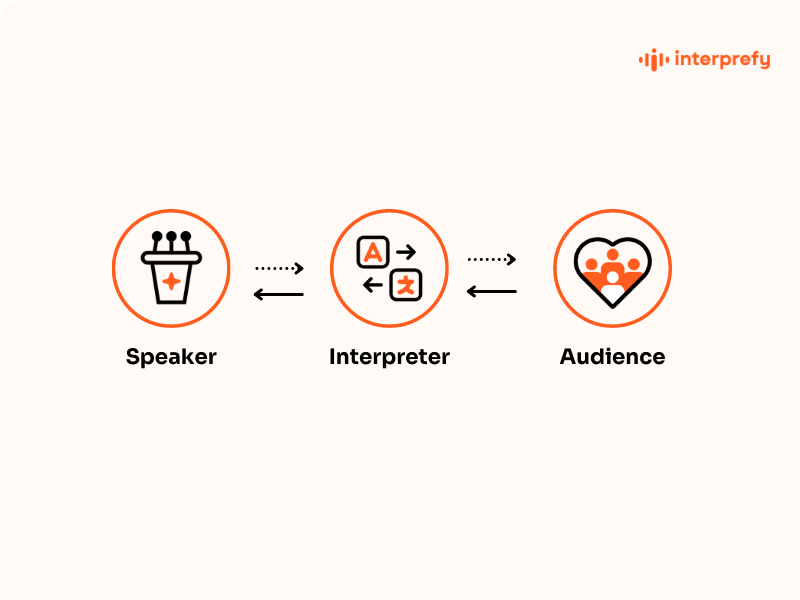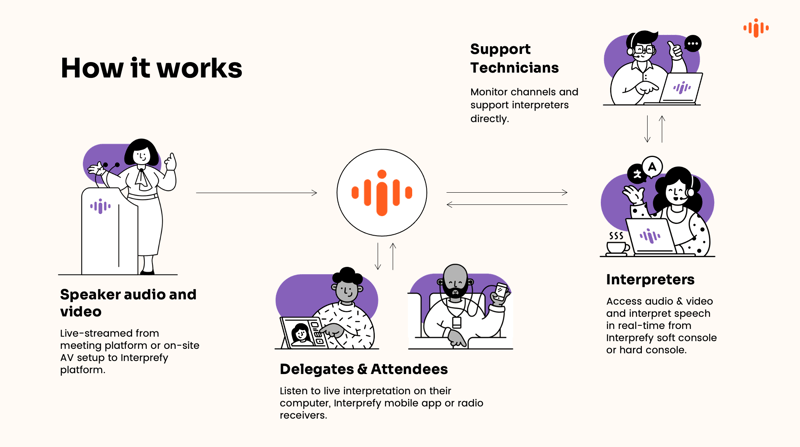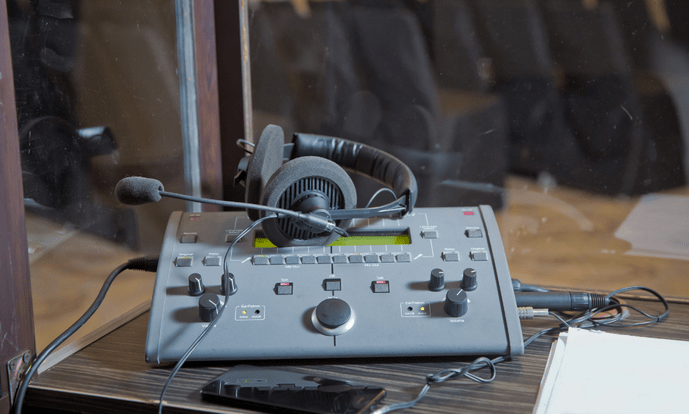Welcome to the exciting world of simultaneous interpretation!
In this guide, we'll walk you through the ins and outs of this type of interpretation, how it works, the different modes of delivery, its benefits, and where you can use it to remove language barriers and connect people in their own language.
Happy learning!
1. What is simultaneous interpretation?
1.1 Definition
Simultaneous interpreteation is defined by the the International Standards Organisation (ISO) as "the process of rendering a spoken or signed message into another spoken or signed language, preserving the register and meaning of the source language, performed while a speaker is still speaking or signing".
1.2 Synonyms
Other terms to refer to it include simultaneous interpreting, live interpreting, live interpretation, real-time interpretation, live event interpretation, conference interpretation, live translation, or conference interpreting.
1.3 Simultaneous vs consecutive interpretation
Interpretation is the art of conveying the essence of spoken or signed words from one language to another, allowing audiences to fully comprehend the message.
Interpretation is a fast-paced and dynamic process that demands a deep understanding of the message, the ability to digest it quickly, and the skill to relay it there and then to an audience in another language, either through speech or sign language. There are two primary modes of interpretation: simultaneous interpretation and consecutive interpretation.
Simultaneous interpretation
This process is the ultimate language bridge that connects speakers and listeners in real-time, without delay or confusion. As the speaker talks, the interpreter listens attentively through headphones and seamlessly translates their words and meanings into another language, using a microphone to relay the message to the audience. This type of interpretation is irreplaceable in events where time is of the essence, such as diplomatic conferences, international conventions, courtrooms, lectures, and press conferences, where one person or a panel of speakers addresses a multilingual audience.
Consecutive interpretation
Consecutive interpretation is a more conversational style of interpretation where the speaker pauses after delivering a few sentences to allow the interpreter to convey the message to the target audience. In certain scenarios, like official statements from politicians, the speaker might do the whole speech and then the interpreter takes the stage to convey it in the target language.
In both scenarios, the interpreter usually sits or stands next to the speaker, jotting down notes as the speaker talks, to ensure a clear and accurate translation. This method is perfect for small meetings, one-on-one conversations, legal proceedings, and other intimate gatherings where a conversational approach or a full statement is preferred.
To explore the variations among the various fields of interpretation and translation, please refer to the information on different disciplines of interpretation.





.webp?width=468&quality=high)









.png?width=689&height=414&name=virtual%20interpreter%20booth-min%20(1).png)
.png?width=600&height=300&name=interpreter%20booth%20(2).png) Image: interpreter booth for in-person interpretation and laptop for remote interpretation
Image: interpreter booth for in-person interpretation and laptop for remote interpretation


 More download links
More download links



